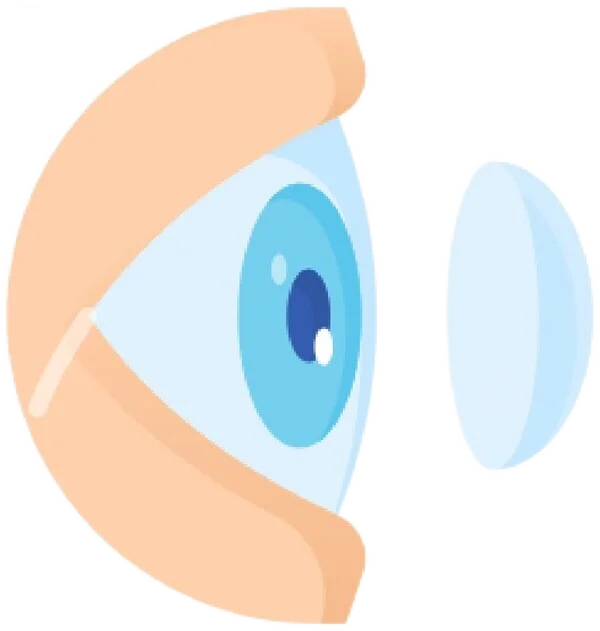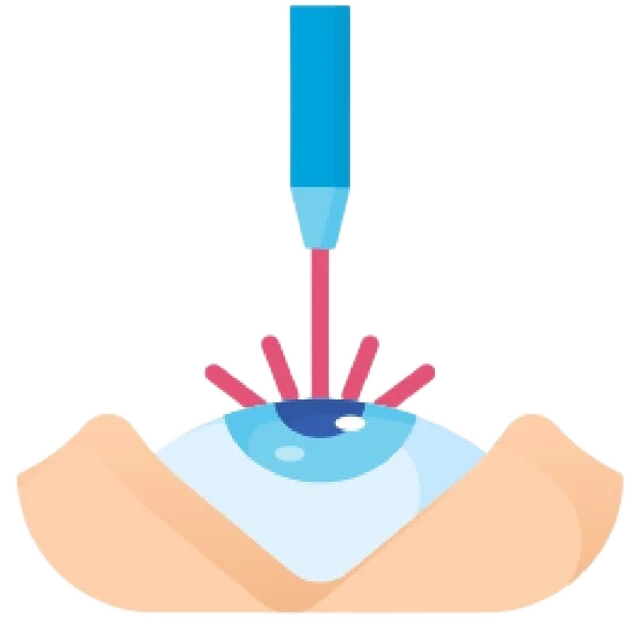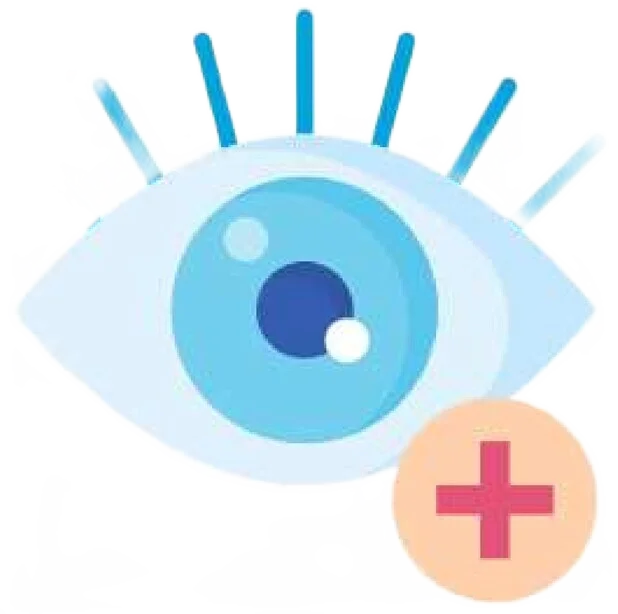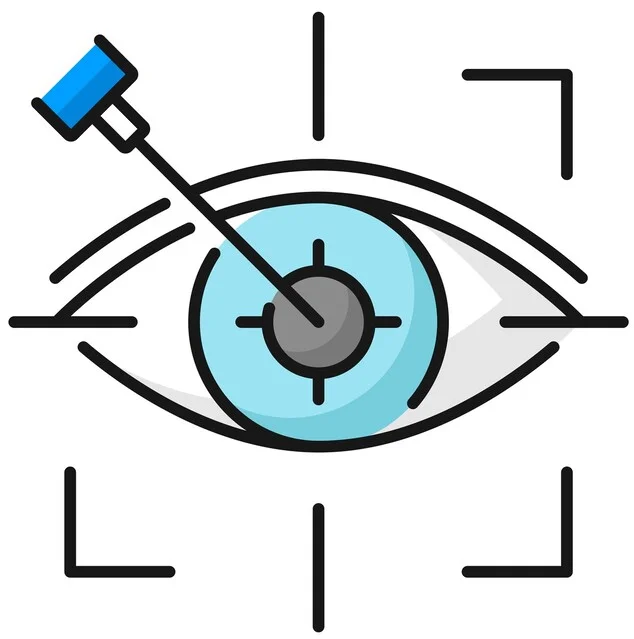
Introduction
What are cataracts?
A cataract is a common eye condition in which the natural lens becomes cloudy, resulting in blurred or distorted vision. It typically develops gradually and is most often related to ageing, though other factors such as trauma or medical conditions can also contribute. As the clouding progresses, everyday tasks like reading, driving, or recognising faces can become more difficult. While cataracts are a leading cause of vision loss worldwide, they are highly treatable with modern surgery offering excellent outcomes.
Causes and Risk Factors of Cataracts
What Causes Cataracts?
Cataracts can develop for a number of reasons, though ageing remains the most common cause. Over time, the proteins in the eye’s natural lens break down and clump together, gradually clouding vision. However, other factors can also increase your risk:
- Ageing – Natural age-related changes to the lens, usually developing after age 60
- Diabetes – High blood sugar levels can damage the eye and accelerate cataract formation
- Eye injury or trauma – Past injury or surgery to the eye may lead to cataract development
- Long-term use of steroids – Especially corticosteroid eye drops or inhalers
- UV radiation exposure – Prolonged exposure to sunlight without eye protection
- Family history – A genetic predisposition can make cataracts more likely to occur earlier
Types of Cataracts
Different Types of Cataracts
Cataracts are classified based on where they develop in the lens and what causes them. Understanding the type can help determine how quickly it may progress and what treatment is appropriate.
Nuclear Cataract
- Description:
Forms in the central (nuclear) zone of the lens. As it progresses, the lens may become yellow or brown, affecting colour perception. - Who it affects:
Most common in older adults; typically age-related. - Speed of progression:
Develops slowly over years and may initially improve near vision before worsening overall clarity.
Cortical Cataract
- Description:
Starts at the edges (cortex) of the lens and gradually moves toward the centre. Characterised by white, wedge-shaped streaks. - Who it affects:
Often linked to diabetes or excessive sun exposure. - Speed of progression:
Variable speed — may progress more quickly than nuclear cataracts.
Posterior Subcapsular Cataract
- Description:
Forms at the back of the lens capsule, directly in the path of light entering the eye. Tends to affect reading and vision in bright light. - Who it affects:
Common in younger patients with steroid use or diabetes, and in those with a history of eye inflammation. - Speed of progression:
Develops faster than other types and can significantly impact vision in a short time.
Congenital Cataract
- Description:
A cataract present at birth or that develops during infancy, usually due to genetic factors or infections during pregnancy. - Who it affects:
Newborns or infants; may be hereditary or caused by conditions such as rubella or galactosaemia. - Speed of progression:
May remain stable or worsen over time. Early detection is crucial to prevent long-term visual impairment.
Secondary Cataract (Also called "After-Cataract")
- Description:
Not a true cataract, but a common complication after cataract surgery. Cloudiness develops on the posterior capsule (the part of the lens left intact during surgery). - Who it affects:
Individuals who’ve had cataract surgery. It can occur weeks, months, or even years after the initial procedure. - Speed of progression:
Can develop gradually or relatively quickly after surgery. It’s easily treated with a quick laser procedure (YAG laser capsulotomy).
Traumatic Cataract
- Description:
Develops after blunt or penetrating injury to the eye. Damage may directly affect the lens proteins and lead to clouding. - Who it affects:
People with a history of eye trauma — sports injuries, accidents, or eye surgery. - Speed of progression:
Can appear immediately or develop slowly over time, depending on the severity of the injury.
Early Signs & Symptoms
Common Symptoms of Cataracts
- Blurry or cloudy vision
Vision may appear hazy or like looking through a foggy window. - Glare and halos around lights
Bright lights (e.g., headlights or sunlight) may cause discomfort, especially at night. - Faded or dull colours
Colours lose their vibrancy and may appear washed out or yellowed. - Double vision in one eye
Seeing two images with one eye, even when the other is closed. - Frequent prescription changes
Requiring new glasses or contact lens prescriptions more often than usual. - Difficulty seeing at night
Night vision may become significantly impaired, making driving harder. - Increased sensitivity to light
Bright indoor lights or sunlight may feel harsh or overwhelming. - Need for brighter lighting
You may find yourself needing stronger lighting for reading or detailed tasks. - Poor depth perception
Judging distances becomes harder, increasing the risk of trips or falls.
Diagnosis and Treatment of Cataracts
Cataracts are typically identified during an eye examination using a visual acuity test, where each eye is assessed individually to check the clarity of vision. Further evaluation involves a slit-lamp examination to inspect the front structures of the eye, including the cornea and lens. A dilated retinal exam may also be performed using eye drops to widen the pupil, allowing the doctor to examine the retina and detect any related issues.
While early cataracts may cause only minor vision changes, surgery is the only effective treatment once the condition begins to interfere with daily activities. Cataract surgery is a safe outpatient procedure where the cloudy natural lens is removed and replaced with a clear artificial lens. It is usually performed on one eye at a time, under local anaesthesia, with minimal downtime and excellent success rates.
Why Timely Diagnosis Matters
Cataracts tend to develop slowly, and the gradual decline in vision can often go unnoticed until it starts to interfere with daily life. Timely diagnosis is essential not only to monitor the progression but also to ensure treatment is planned before vision loss significantly impacts quality of life. Early intervention can lead to smoother surgical outcomes and quicker recovery.
Key reasons to prioritise early diagnosis:
- Cataracts worsen over time if left untreated
- Vision loss is gradual and may go unnoticed
- Early detection leads to better outcomes with surgery
- Delaying diagnosis may increase risk of complications in advanced cases
- Timely care helps maintain independence and lifestyle
Continue Learning About Cataracts
Cataract Surgery Overview
Restore your vision with Mr. Mo Majid the expert cataract and multifocal lens surgeon, a highly respected UK eye surgeon with a reputation for delivering outstanding results.
Other Eye Conditions
The eyes are the most complex sensory organ in our bodies. The eyes provide vision by recording images of our surroundings that the brain will interpret. Although the eye measures only about an inch...
Premium Lens
A premium intraocular lens (IOL) is a new type of IOL used in cataract patients that enables the patients to view both far distance and near distance objects without using glasses. Earlier, monofocal...
Worried About Your Vision?
Schedule a consultation with Mr. Mo Majid to evaluate your eye health.
Quick Answers About Cataracts
Are cataracts preventable?
While you can’t completely prevent cataracts — especially age-related ones — you can reduce your risk by wearing UV-protective sunglasses, managing conditions like diabetes, avoiding smoking, and having regular eye exams.
Do both eyes get cataracts?
Yes, cataracts typically develop in both eyes, although they may progress at different rates. One eye may be affected more than the other, leading to noticeable vision imbalance.
How are cataracts diagnosed?
Cataracts are diagnosed through a comprehensive eye exam. This usually includes a visual acuity test, a slit-lamp examination to inspect the lens, and a dilated retinal exam to assess the back of the eye.







